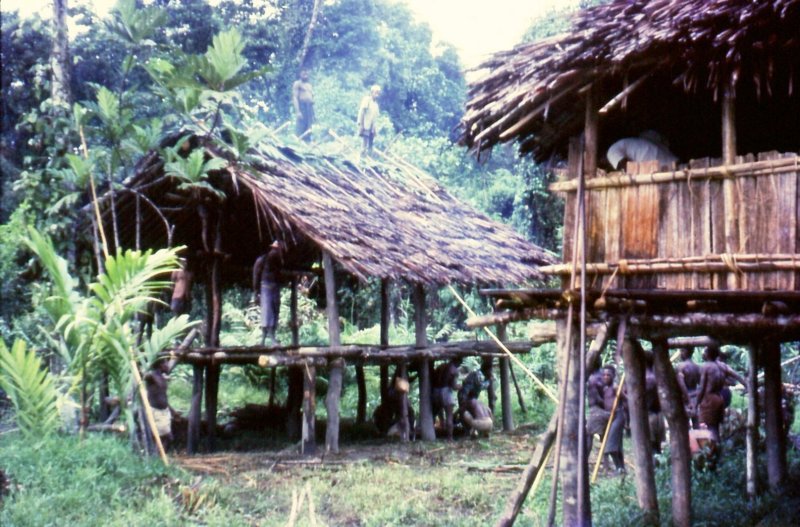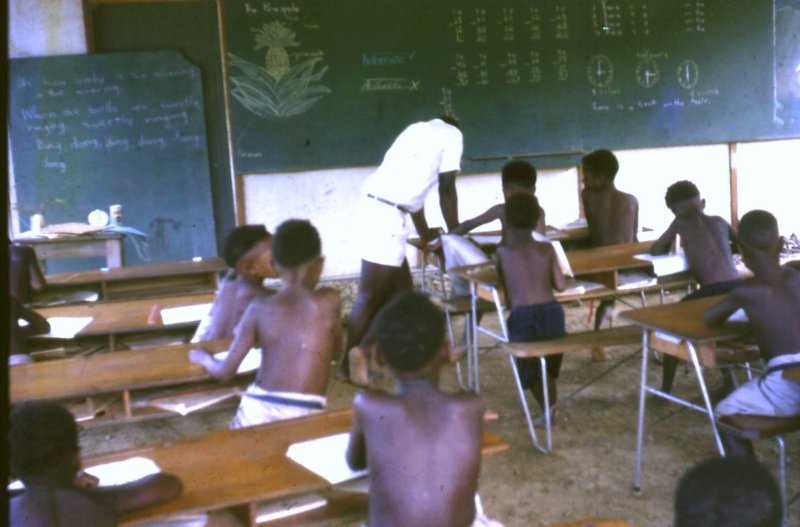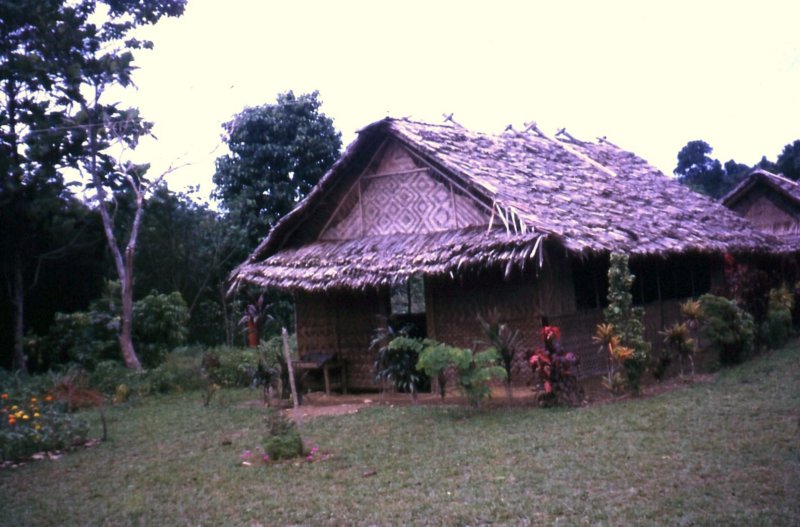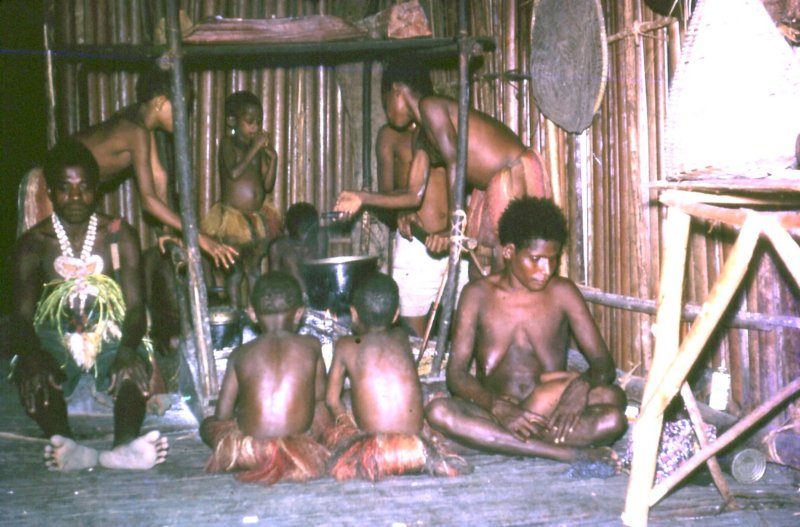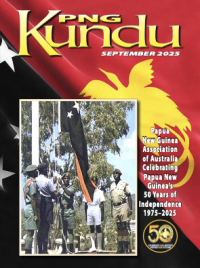Freestone Ambunti 1964/75 – Photos from Trevor Freestone
Trevor Freestone was an Education Officer in Papua New Guinea from 1964 to 1975. His postings included Ambunti in the East Sepik District, Pagei in the Sandaun (West Sepik) Province and postings at Bena bena and Watabung in the Eastern Highlands Province.
Trevor completed the 5th “E” Course in 1963. His initial two year posting was to the Ambunti Primary School located on the Sepik River. Still in the Sepik he then spent two years at Pagei PS which is on the Indonesia border. From there he was posted to the Sigerehe Primary school at Bena Bena (Eastern Highlands District). After a year he was transferred to Watabung Primary school where he stayed until the end of 1974. After a stint in the Department of Education HQ he left PNG in early 1975 but returned to help celebrate PNG Independence Celebrations in Goroka where he did the pyrotechnics for them.
Trevor returned to Watabung in 2008 where the community changed the name of their school to the “Trevor Freestone Primary School, Watabung” in order to acknowledge the work that he did for their school and community.

The Government Trawler ' MV Rouna Falls' that supplied the stations of Ambunti and Angoram - there were no roads into Ambunti.

The Ambunti wharf. It was made of 44 gallon drums that allowed it to float on the water and cater for the rise and fall of the river.

A helicopter landing on the airstrip with supplies for the SDA mission. All supplies came either by boat or plane.

In 1964 I convinced the government to build us a new school at the far end of the airstrip away from all the distractions of the wharf which was next to the old school. The old school buildings were in bad shape needing replacement. This, together with the following three slides are pictures of the dancers who attended our official opening of the new school.

In 1964 I convinced the government to build us a new school at the far end of the airstrip away from all the distractions of the wharf which was next to the old school. The old school buildings were in bad shape needing replacement. This, is a picture of the dancers who attended our official opening of the new school.
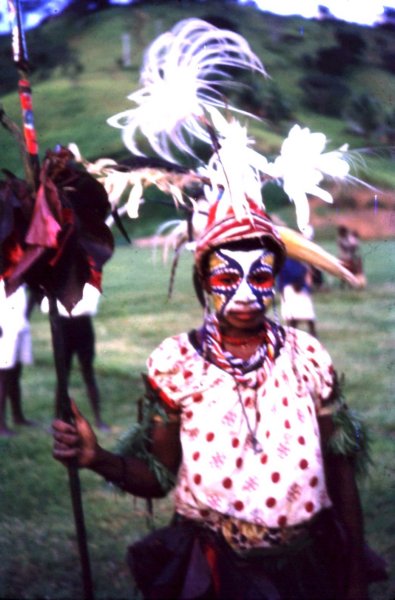
In 1964 I convinced the government to build us a new school at the far end of the airstrip away from all the distractions of the wharf which was next to the old school. The old school buildings were in bad shape needing replacement. This, is a picture of the dancers who attended our official opening of the new school.

In 1964 I convinced the government to build us a new school at the far end of the airstrip away from all the distractions of the wharf which was next to the old school. The old school buildings were in bad shape needing replacement. This, is a picture of the dancers who attended our official opening of the new school.
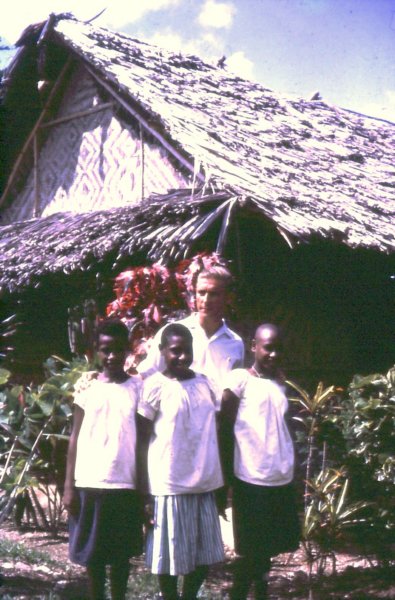
Mumbungi, Ravu & Yambisic at the new school. Yambisic's father became the member for Ambunti in the new parliament in 1975.
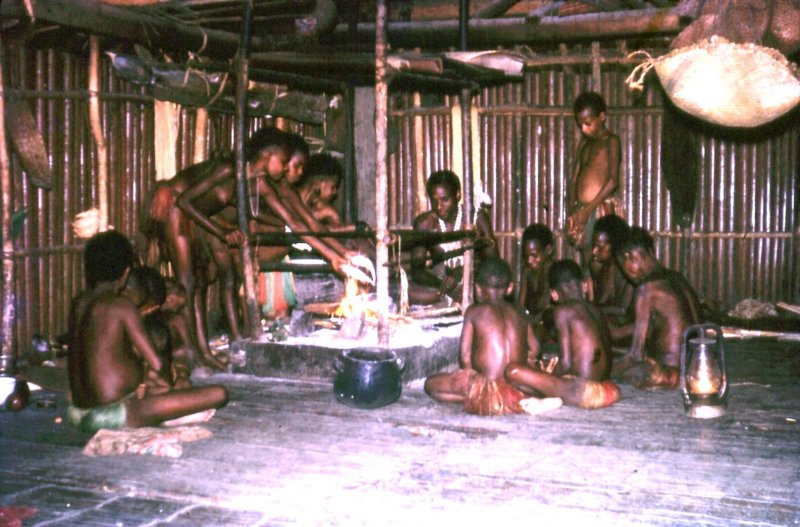
This and the next slide show a domestic scene - cooking the evening meal of catfish at Apan a hamlet near Ambunti.

This is at a place called Avatip. Originally a 'spirit house' but now used as a craft centre. This house had a violent history as its construction demanded human sacrifices. Avatip played a major roll in the defeat of a Japanese patrol that was terrorising the villagers who lived on the river.

This, together with the next four slides shows views of Kumbarumba a large village south of Ambunti. During the wet season the village is entirely flooded thus the houses are on stilts. Movement between houses in the wet season is by canoe.
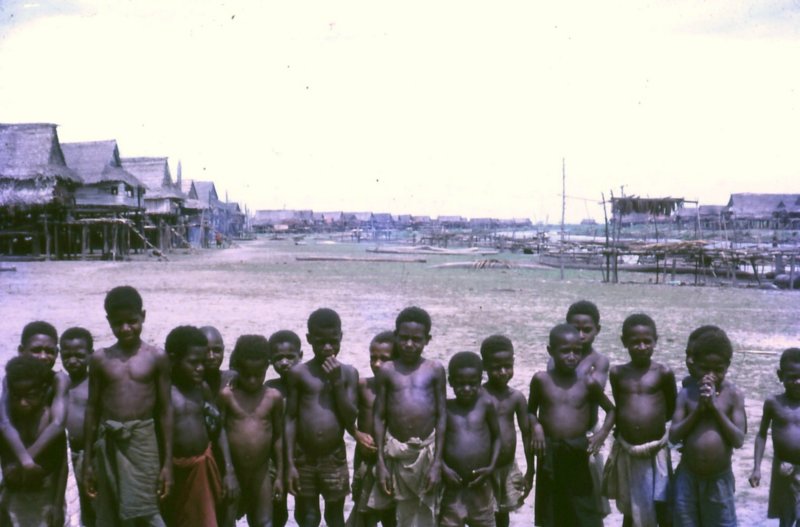
This shows a view of Kumbarumba a large village south of Ambunti. During the wet season the village is entirely flooded thus the houses are on stilts. Movement between houses in the wet season is by canoe.

This shows a view of Kumbarumba a large village south of Ambunti. During the wet season the village is entirely flooded thus the houses are on stilts. Movement between houses in the wet season is by canoe.

This shows a view of Kumbarumba a large village south of Ambunti. During the wet season the village is entirely flooded thus the houses are on stilts. Movement between houses in the wet season is by canoe.

This show a view of Kumbarumba a large village south of Ambunti. During the wet season the village is entirely flooded thus the houses are on stilts. Movement between houses in the wet season is by canoe.

Views (this and the next 5 slides) of the beautiful buildings at Tambanum village. The craft centre of the river. The houses are on stilts to avoid both flood and crocodiles. They have been built completely with native materials without using one nail.

View of the beautiful buildings at Tambanum village. The craft centre of the river. The houses are on stilts to avoid both flood and crocodiles. They have been built completely with native materials without using one nail.

View of the beautiful buildings at Tambanum village. The craft centre of the river. The houses are on stilts to avoid both flood and crocodiles. They have been built completely with native materials without using one nail.

View of the beautiful buildings at Tambanum village. The craft centre of the river. The houses are on stilts to avoid both flood and crocodiles. They have been built completely with native materials without using one nail.

